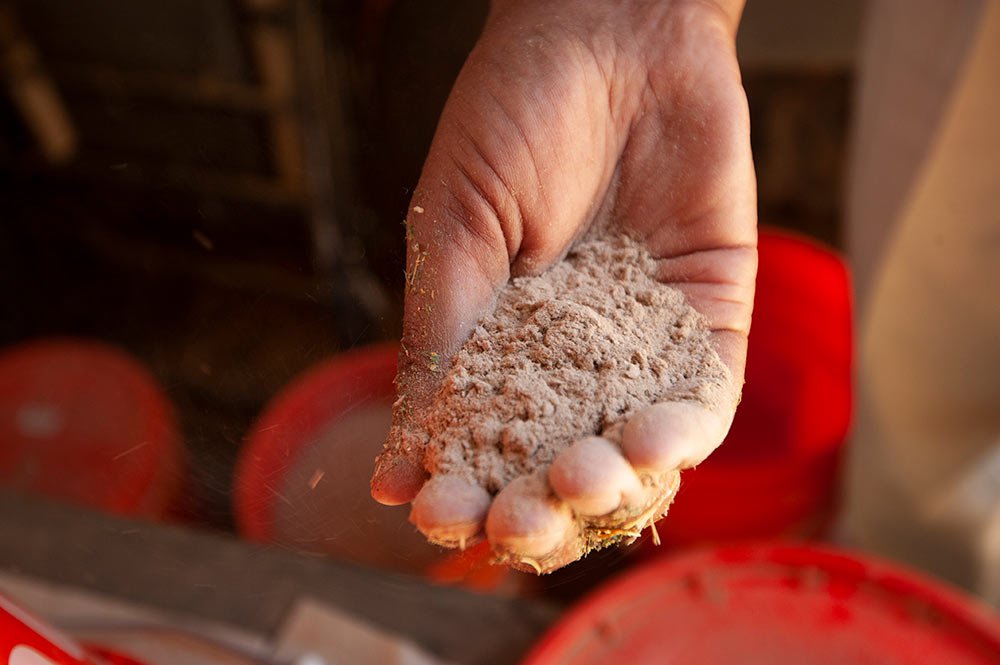Scientific Method
- Observation
- Question
- Hypothesis based on background research
- Test with experiment
- Results
- Conclusion
Consider how closely researchers have followed these steps while investigating the impact of dairy farming on greenhouse gas emissions.
Observation
The planet is warming, storms are stronger, weather patterns are changing, and sea levels are rising.
We can carpool, save electricity by turning off lights or switching to LED bulbs, we can put solar panels on our homes.
But are fossil fuels the only source of greenhouse gases?
Methane, the gas belched out by cows, is 23 times more potent at trapping heat than carbon dioxide.
Can we do an experiment to reduce emissions from cows?
Question
Can methane emissions from cows be reduced?
Background Information
You may have heard that a cow has four stomachs. A cow has one stomach, but it is divided into four compartments.

(CBSE, 2015)
Background Information, Continued
The rumen is the first compartment. It is filled with bacteria that break down complex carbohydrates found in hay, grass, and other plant material. These bacteria produce methane waste—a potent greenhouse gas. As the cow eats, it also burps. The gas of these expulsions comes from the bacteria and is largely methane.
Each year, a dairy cow emits between 80 and 120 kg of methane mainly from burping.
With 1.3–1.5 billion cows on the planet, livestock contribute 28% of all methane emissions.

(CBSE, 2015)
How can we reduce these methane emissions?
- Eat less meat.
- Become vegan and eat no meat or dairy.
- Feed cows and cattle a better diet with less corn and soy.
- Find a food additive to reduce methane production.

(CBSE, 2015)
How can we reduce these methane emissions?
Certainly, eating a vegetarian or vegan diet is a personal choice, but if people suddenly made this switch, it would impact the beef and dairy industry.
Feeding cows more grass and better quality feed has been shown to reduce emissions, but it is expensive.
In Australia, they tested Asparagopsis on bacteria from a cow’s gut and found that it blocked methane fermentation, so they fed the seaweed to cows at a rate of 2%. This reduced methane emissions from the cows by 99%!

(Urquiaga, 2018)
What Approach to Reduce Methane Seems Reasonable?
Seems simple: Feed to cows seaweed to reduce methane emissions.
But, the seaweed is rather hard to get. There are no commercial growers
So, researchers at University of California, Davis are studying the impact of feeding lower rates of seaweed (Asparagopsis) to dairy cows to reduce methane.

(Urquiaga, 2018)
Hypothesis
If cows eat seaweed, then it will block methane fermentation of the bacteria in the gut and reduce methane emissions.

(Urquiaga, 2018)
How can we reduce these methane emissions?
12 cows
→ 4 fed alfalfa and hay + 1% seaweed and molasses mix
→ 4 fed alfalfa and hay + 0.5% seaweed and molasses mix
→ 4 fed alfalfa and hay + molasses
Measurements were taken every day, 4 times per day, for 2 weeks during the experiment using a Breathalyzer-type contraption that measured the methane in the cows' burps.
There is a video of the feeding with the methane capture system here:

(Urquiaga, 2018)
Controlled Experiment
After 2 weeks, all of the cows had a 1 week break from the seaweed mix. Then, the experiment was repeated with the cows rotated into different feeding groups. Select the Feed button for each group. Record the number of burps released in the following table below: .
| Group 1: Diet: Hay mix + 0.1% Seaweed mix |
|
|---|---|

|
|
| Group 1 | |
| Burps | |
| Group 2: Diet: Hay mix + 0.5% Seaweed mix |
|
|---|---|

|
|
| Group 2 | |
| Burps | |
| Group 3: Diet: Hay mix |
|
|---|---|

|
|
| Group 3 | |
| Burps | |
Grams of Methane Emitted

Blind taste test of the milk from dairy cows.
Do you think the different types of feed will have an effect on the taste of the milk?
Sample A = From Cow fed 1% seaweed
Sample B = Cow fed no seaweed
Sample C = Cow fed .5% seaweed
Blind taste test of the milk from dairy cows. 16 people tested.
| Sample A: From Cow fed 1% seaweed |
|
|---|---|
 |
|
| Sample C: Cow fed no seaweed |
|
|---|---|
 |
|
| Sample B: Cow fed .5% seaweed |
|
|---|---|
 |
|
Beef cattle also emit methane.
Will seaweed reduce their emissions as well?
Beef cattle also emit methane.
Will it affect the taste of the meat?
Check Your Knowledge
Which of the following is an independent variable? Choose all that apply.
Drawbacks or Limitations of Current Study
Are 12 cows sufficient for the sample size?
References
CBSE. (2015, December 18). The ruminants [Video file]. Retrieved from https://www.youtube.com/watch?v=XPGoVQW7J8U
Kennedy, M. (2018). Surf and turf: To reduce gas emissions from cows, scientists look to the ocean. Retrieved from https://www.npr.org/sections/thesalt/2018/07/03/623645396/surf-and-turf-to-reduce-gas-emissions-from-cows-scientists-look-to-the-ocean
Mernit, J. L. (2018). How eating seaweed can help cows to belch less methane. Retrieved from https://e360.yale.edu/features/how-eating-seaweed-can-help-cows-to-belch-less-methane
Teirstein, Z. (2017). Study: Seaweed in cow feed reduces methane emissions almost entirely. Retrieved from https://foodtank.com/news/2017/06/seaweed-reduce-cow-methane-emission/
Urquiaga, G. [Photographer]. (2018, May 24). Can seaweed cut methane [Photographs]. Retrieved from https://climatechange.ucdavis.edu/news/can-seaweed-cut-methane-emissions-on-dairy-farms/